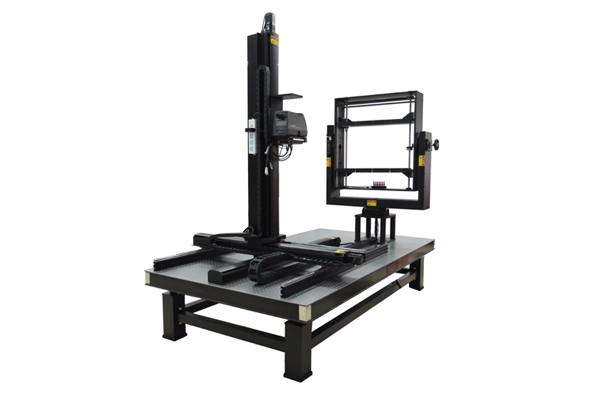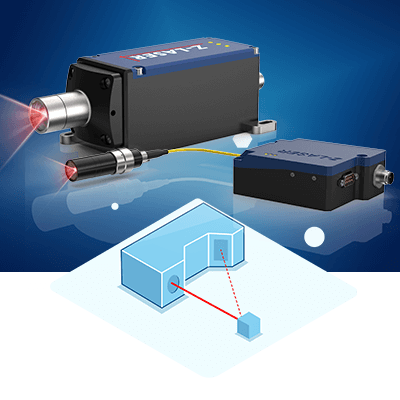The Function of Optical Dimension Solutions in Advancing Assessment Techniques
Optical dimension systems have actually changed assessment, bringing a degree of accuracy that was as soon as unthinkable. As you explore additionally, you'll discover how these systems are forming the future of dimension and high quality control.
The Development of Assessment: A Historical Viewpoint
As you discover the history of assessment, you'll find that its development reflects mankind's pursuit for accuracy and standardization. From old human beings making use of body components as systems of dimension to the development of standardized weights and procedures, each step shows our need for accuracy. The Egyptians constructed the pyramids making use of accurate dimensions, while the Romans advanced engineering with their advanced measuring tools.
Throughout the Renaissance, clinical breakthroughs shifted the focus towards extra empirical techniques, leading the means for modern metrology. The intro of the statistics system in the late 18th century marked a considerable turning point, establishing universal requirements. Throughout the 20th century, technological innovations further changed width, making it possible for extremely precise dimensions in various fields.
Today, width continues to evolve, integrating electronic innovation and automation. This background highlights not simply the relevance of dimension yet additionally our unrelenting search of improving precision and uniformity in our progressively complicated globe.
Principles of Optical Dimension Systems
Understanding the principles behind optical measurement systems is crucial for precise lead to metrology. You'll intend to think about fundamental optical principles, dimension precision elements, and efficient system calibration methods. Each of these components plays a crucial role in ensuring your measurements are accurate and dependable.
Essential Optical Concepts
While exploring optical dimension systems, you'll come across fundamental optical principles that develop the backbone of precise data purchase. Light acts in predictable ways, and recognizing these behaviors-- like representation, refraction, and diffraction-- is crucial for reliable dimensions. You'll use lenses and mirrors to manipulate light and concentrate it onto your target, making certain accuracy in your analyses. Furthermore, the wave nature of light allows for disturbance patterns, which can enhance dimension resolution. Polarization can also play an essential duty in distinct signal from sound, enhancing the quality of your outcomes. By mastering these concepts, you'll be geared up to take advantage of optical innovations properly, paving the way for developments in width and ensuring your dimensions are both trustworthy and repeatable.
Measurement Accuracy Factors
To attain high measurement precision in optical systems, numerous variables come into play, influencing the dependability of your outcomes. High-grade lenses and detectors decrease aberrations and sound, guaranteeing your dimensions are accurate. By addressing these factors, you can improve the total efficiency of your optical dimension systems, leading to even more precise and trustworthy results in your width applications.
System Calibration Techniques
Achieving high measurement accuracy is only component of the formula; correct system calibration methods are equally crucial in optical measurement systems. Next off, utilize known measurements to confirm the system's outcome and make required adjustments. With these methods, you'll improve the reliability of your optical dimension system.
Trick Technologies Behind Optical Measurement
Optical dimension systems rely upon several crucial innovations that improve precision and performance in metrology. One vital modern technology is interferometry, which makes use of the interference of light waves to measure small variations and surface irregularities with severe precision. You'll also locate laser scanning systems, which catch comprehensive 3D information of items rapidly, making them invaluable for dimensional evaluation.
Furthermore, CCD and CMOS sensing units play a considerable duty in transforming light right into electric signals, permitting high-resolution imaging and specific dimensions. Advanced formulas for image handling additionally improve dimension accuracy by assessing data in actual time, filtering out sound and enhancing attributes.
Lastly, optical fiber offer adaptability and the capability to gauge in challenging settings while maintaining signal honesty. By leveraging these technologies, you can attain superior cause your width tasks, making certain that your measurements are both trustworthy and accurate.
Applications of Optical Measurement in Market
As sectors increasingly demand accuracy and performance, the applications of optical measurement systems have ended up being essential across different fields. In production, these systems help you keep track of dimensions and resistances in real-time, making certain quality assurance without lengthy hand-operated checks. In the automotive industry, optical measurements help in lining up parts with accuracy, boosting safety and performance.
In electronics, you're using optical methods to check min features on motherboard, spotting problems that might cause failings. The aerospace market advantages from non-destructive screening methods, enabling you to examine products and elements without jeopardizing their stability.
Optical measurement also plays an essential function in textiles, ensuring fabric measurements fulfill specific requirements. optical measurement system. With their capability to offer high-resolution data quickly, these systems empower you to make enlightened choices, enhance processes, and ultimately drive development across your sector
Enhancing Accuracy and Efficiency in Dimensions
When you think of improving accuracy in dimensions, precision in your measurement strategies is crucial. By simplifying these procedures, you can achieve quicker outcomes without compromising quality. Allow's check out how taking on innovative optical measurement systems can elevate both precision and effectiveness in your job.
Accuracy in Measurement Strategies
Precision in dimension methods is important for achieving dependable lead to assessment, particularly because small disparities can result in substantial errors. By making use of sophisticated optical dimension systems, you can improve the precision of your measurements. These systems give high-resolution data that aid you discover also the smallest variants in dimensions. When you take on these technologies, you decrease uncertainties and enhance repeatability in your procedures. Furthermore, specific measurements enable you to keep quality control, making certain that items meet rigid specifications. This not only improves your reliability yet also enhances consumer fulfillment. Spending in accuracy measurement tools eventually brings about increased efficiency, minimized waste, and maximized manufacturing cycles. Embracing these techniques will transform your strategy to width, producing impressive results.
Streamlining Dimension Procedures
To boost precision and effectiveness in measurements, streamlining your measurement procedures is crucial. Beginning by embracing optical measurement systems that offer real-time data, lowering the moment invested in hands-on recording. These systems frequently integrate flawlessly with existing software program, enabling you to automate data collection and evaluation.
Next, standardize your dimension procedures. By executing regular treatments, you reduce variability and boost repeatability. Don't fail to remember to on a regular basis calibrate your devices to ensure its accuracy.

The Impact of Optical Measurement on R & D
As researchers endeavor to more push the limits of technology, optical dimension systems have become vital devices in the development process. These systems offer you with exact, real-time information that boosts your capacity to analyze complex materials and structures. In different fields, from biotechnology to aerospace, you rely upon optical dimensions to enhance and maximize layouts item efficiency.

With high-resolution imaging and non-contact techniques, you can lessen example disruption, enabling for more accurate results. This ability to catch minute details increases your R&D cycle, allowing you iterate designs quickly and efficiently. Optical measurement cultivates collaboration throughout techniques, as the data generated is frequently easily interpretable and shareable.
Inevitably, incorporating optical measurement systems into your study not just increases productivity yet likewise deepens your understanding of the sensations you research. By leveraging these sophisticated techniques, you're far better furnished to innovate and remain ahead in a competitive landscape.
Future Fads in Optical Measurement Systems
With the quick development of technology, you're most likely to see significant changes in optical measurement systems that will certainly redefine their application across various markets. You'll discover an approach increased automation and combination of expert system, enabling visite site real-time information analysis and boosted accuracy. Miniaturization is one more trend; compact tools will make it possible for measurements in tighter rooms, making them optimal for areas like aerospace and biomedical applications.
Expect to see systems that can operate in difficult settings, giving dependable measurements in severe problems. As these modern technologies converge, you'll discover that optical dimension systems not just boost accuracy yet also improve process, inevitably driving innovation and efficiency in your jobs.
Often Asked Concerns
Exactly How Do Optical Dimension Solutions Contrast to Standard Dimension Techniques?
Optical dimension systems supply greater accuracy and faster outcomes compared to conventional methods. You'll discover they catch more data points properly, lowering human mistake and raising integrity, making them a recommended option in different applications.
What Industries Benefit The Majority Of From Optical Measurement Solutions?
You'll discover industries like aerospace, automotive, and electronics profit most from optical dimension systems. These markets rely upon exact dimensions to ensure quality and performance, boosting effectiveness and minimizing costs through innovative modern technology.

Are Optical Dimension Solutions Expensive to Implement?
Optical dimension systems can be expensive to carry out, but their accuracy and efficiency commonly justify the expense. Purchasing such innovation can lead to considerable lasting cost savings and renovations in quality throughout numerous applications.
What Skills Are Needed to Run Optical Measurement Solutions?
To run optical measurement systems, you'll need solid analytical skills, interest to information, and proficiency in software application devices. Familiarity with optics and an understanding of measurement concepts will certainly additionally enhance your efficiency and performance.
How Do Environmental Aspects Influence Optical Measurements?
Environmental elements like temperature level, air, and humidity top quality can distort optical dimensions. You'll see variations in accuracy due to light interference or refraction. optical measurement system. Keeping secure problems is essential for exact and trusted optical dimension outcomes
Verdict
In recap, optical measurement systems are changing metrology by offering unmatched accuracy and performance. you can check here As you explore future patterns, you'll see exactly how the assimilation of AI and automation will certainly proceed to elevate measurement techniques, driving development and boosting quality control.
Attaining high dimension precision is just component of the equation; proper system calibration techniques are equally essential in optical measurement systems.When you believe concerning improving precision in dimensions, accuracy in your dimension strategies is vital. By using innovative optical dimension systems, you can improve the accuracy of your measurements.To boost precision and effectiveness in measurements, improving your measurement processes is crucial. Just How Do Optical Dimension Equipments Compare to Typical Measurement Techniques?
Comments on “Typical mistakes to avoid when implementing an optical measurement system”